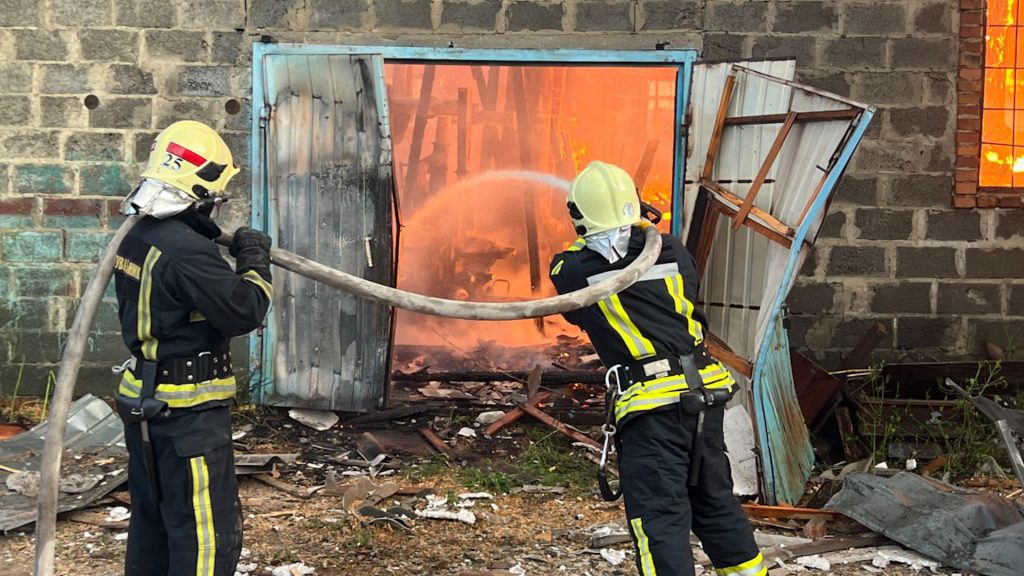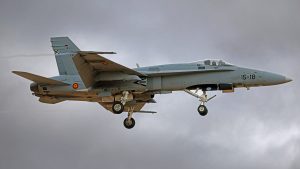Kyiv hit hard as Russia fires 452 drones, 45 missiles across Ukraine

Russian forces launched one of their largest coordinated air assaults of the war overnight on Friday, June 6, killing at least five civilians and injuring more than 70 across multiple regions of Ukraine. Kyiv alone reported four fatalities and at least 20 injuries, including three emergency workers who died while responding to fires triggered by the attack, according to city officials and Ukraine’s Interior Ministry.
Unbiased. Straight Facts.TM
Ukrainian President Volodymyr Zelenskyy reported Russia has used 27,700 aerial bombs, 11,200 Shahed drones, 9,000 other drones and more than 700 missiles since January 2025.

What weapons did Russia use in the assault?
Russia fired at least 452 drones and 45 missiles in the attack, including Iranian-designed Shahed drones and ballistic Iskander missiles, according to the Ukrainian Air Force. Ukrainian defenses intercepted roughly 200 drones and 36 missiles, while 169 additional drones likely acted as decoys. Ukrainian forces used aircraft, mobile fire teams, electronic warfare units and anti-aircraft missile systems in their response.
What damage occurred in Kyiv during the attack?
In Kyiv, missile strikes and falling debris caused multiple fires and power outages. A blaze broke out on the 11th floor of a high-rise apartment and another fire near the city center spread across more than 5,000 square feet.
Drone strikes damaged metro rail lines, but officials reported no injuries from the incident. The Kyiv City Administration said more than 2,000 households lost power on the city’s eastern bank.
Which regions were most affected outside Kyiv?
Authorities reported injuries and damage in at least eight other regions. Drone strikes on an apartment building in Volyn Oblast injured 15 people.
Ternopil recorded 10 injuries, including five emergency responders and Kherson reported 10 more following strikes on residential areas and public infrastructure. Officials reported more casualties and structural damage in the oblasts of Poltava, Zaporizhzhia, Chernihiv, Kharkiv and Sumy.
How did Ukrainian officials and residents respond?
Kyiv officials urged residents to seek shelter as explosions echoed through the capital. Fourteen-year-old resident Vitalina Vasylchenko told reporters she sheltered in a parking garage with her sister and mother after a blast shook her home. “I’m shocked that I’m alive,” she said.
Ukraine’s Human Rights Commissioner, Dmytro Lubinets, condemned the assault, stating that it violated fundamental human rights. “Russia is acting like a terrorist, systematically targeting civilian infrastructure,” he wrote on Telegram, urging international action.
What is the context behind Russia’s escalation?
The June 6 assault came two days after Russia vowed to retaliate for Ukraine’s long-range drone strike on Russian bomber bases, which reportedly destroyed or damaged several aircraft. President Vladimir Putin warned U.S. President Donald Trump during a phone call that retaliation was imminent. Trump later commented that “it’s probably not going to be pretty.”
Trump, who spoke with both leaders this week, likened the conflict to two young children fighting on a playground.
“Sometimes you’re better off letting them fight for a while and then pulling them apart,” Trump told reporters while hosting German Chancellor Friedrich Merz at the White House. “And I gave that analogy to Putin yesterday.”
Kremlin spokesman Dmitry Peskov pushed back on Trump’s comparison Friday, saying the war is “an existential question” tied to Russia’s national interests, security and future.
Ukrainian President Volodymyr Zelenskyy has proposed a 30-day cease-fire and direct talks with Putin, but the Kremlin has rejected those terms. Since the start of 2025, Russia has launched more than 27,700 aerial bombs, 11,200 Shahed drones, 9,000 other strike drones and over 700 missiles, according to Zelenskyy.





